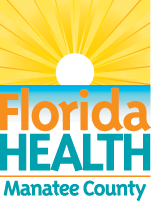It's a New Day in Public Health.
The Florida Department of Health works to protect, promote, and improve the health of all people in Florida through integrated state, county, and community efforts.
DOH-MANATEE ISSUES RED TIDE ALERTS FOR BAYFRONT PARK, COQUINA BEACH SOUTH
November 14, 2022
DOH-MANATEE ISSUES RED TIDE ALERTS FOR BAYFRONT PARK, COQUINA BEACH SOUTH
Contact:
Christopher Tittel
Communication Director
(941) 720-6145
Bradenton, Fla. -- The Florida Department of Health in Manatee County (DOH-Manatee) has issued health alerts for the presence of a red tide bloom near the following locations:
- Bayfront Park
- Coquina Beach South
- Longboat Pass/Coquina Boat Ramp
- Rod and Reel Pier (City of Anna Maria Island)
This is in response to water samples that the Florida Fish and Wildlife Conservation Commission took on Nov. 7.
The public should take the following precautions in and around all of these locations:
- Look for informational signage posted at most beaches.
- Stay away from the water.
- Do not swim in waters with dead fish.
- Those with chronic respiratory problems should be especially cautious and stay away from these locations as red tide can affect your breathing.
- Do not harvest or eat molluscan shellfish or distressed or dead fish from these locations. If caught live and healthy, finfish are safe to eat as long as they are filleted and the guts are discarded. Rinse fillets with tap or bottled water.
- Wash your skin and clothing with soap and fresh water if you have had recent contact with red tide.
- Keep pets and livestock away and out of the water, sea foam and dead sea life. If your pet swims in waters with red tide, wash your pet as soon as possible.
- Residents living in beach areas are advised to close windows and run the air conditioner, making sure that the A/C filter is maintained according to manufacturer's specifications.
- If outdoors near an affected location, residents may choose to wear masks, especially if onshore winds are blowing.
What Is Red Tide?
Red tide is one type of harmful algal bloom caused by high concentrations of the toxic dinoflagellate Karenia brevis (K. brevis), a type of microscopic algae found in the Gulf of Mexico. Red tide typically forms naturally offshore, commonly in late summer or early fall, and is carried into coastal waters by winds and currents. Once inshore, these opportunistic organisms can use nearshore nutrient sources to fuel their growth. Blooms typically last into winter or spring, but in some cases, can endure for more than one year.
Is Red Tide Harmful?
K. brevis produces potent neurotoxins (brevetoxins) that can be harmful to the health of both wildlife and people. Wind and wave action can break open K. brevis cells and release toxins into the air. This is why you should monitor conditions and use caution when visiting affected water bodies. People in coastal areas can experience varying degrees of eye, nose and throat irritation during a red tide bloom. Some individuals with chronic respiratory conditions like asthma or chronic lung disease might experience more severe symptoms. Red tide toxins can also affect the central nervous system of fish and other marine life, which can lead to fish kills and increased wildlife strandings or mortalities. Eating contaminated seafood can cause neurotoxic shellfish poisoning in humans. Symptoms include nausea and vomiting; tingling of the mouth, lips and tongue; and slurred speech and dizziness.
Find current information about Florida’s water quality status and public health notifications for harmful algal blooms and beach conditions by visiting ProtectingFloridaTogether.gov and floridahealth.gov/environmental-health/aquatic-toxins. Protecting Florida Together is the state’s joint effort to provide statewide water quality information to prioritize environmental transparency and commitment to action.For local shellfish harvesting status, visit the Florida Department of Agriculture and Consumer Services.
Where Can I Report Issues Related to Red Tide?
The Florida Fish and Wildlife Conservation Commission collects and analyzes red tide samples and results are updated multiple times daily (MyFWC.com/redtidemap/); status updates are issued twice weekly during blooms (Red Tide Current Status). To hear a recording about red tide conditions throughout the state, call the toll-free hotline at 866-300-9399.
To report fish kills, contact the Florida Fish and Wildlife Research Institute via the FWC Reporter App, call 1-800-636-0511, or report online at https://myfwc.com/research/saltwater/health/fish-kills-hotline/.
Report symptoms from exposure to a harmful algal bloom or any aquatic toxin to the Florida Poison Information Center. Call 1-800-222-1222 to speak to a poison specialist immediately.
Contact your veterinarian if you believe your pet has become ill after consuming or having contact with red tide-affected water or contaminated marine life.
If you have other health questions or concerns about red tide blooms, please call the Florida Department of Health in Manatee County at (941) 748-0747.
####
About the Florida Department of Health
The Department, nationally accredited by the Public Health Accreditation Board, works to protect, promote and improve the health of all people in Florida through integrated state, county and community efforts.
Follow us on Facebook, Instagram and Twitter at @HealthyFla. For more information about the Florida Department of Health please visit www.FloridaHealth.gov.



Connect with DOH